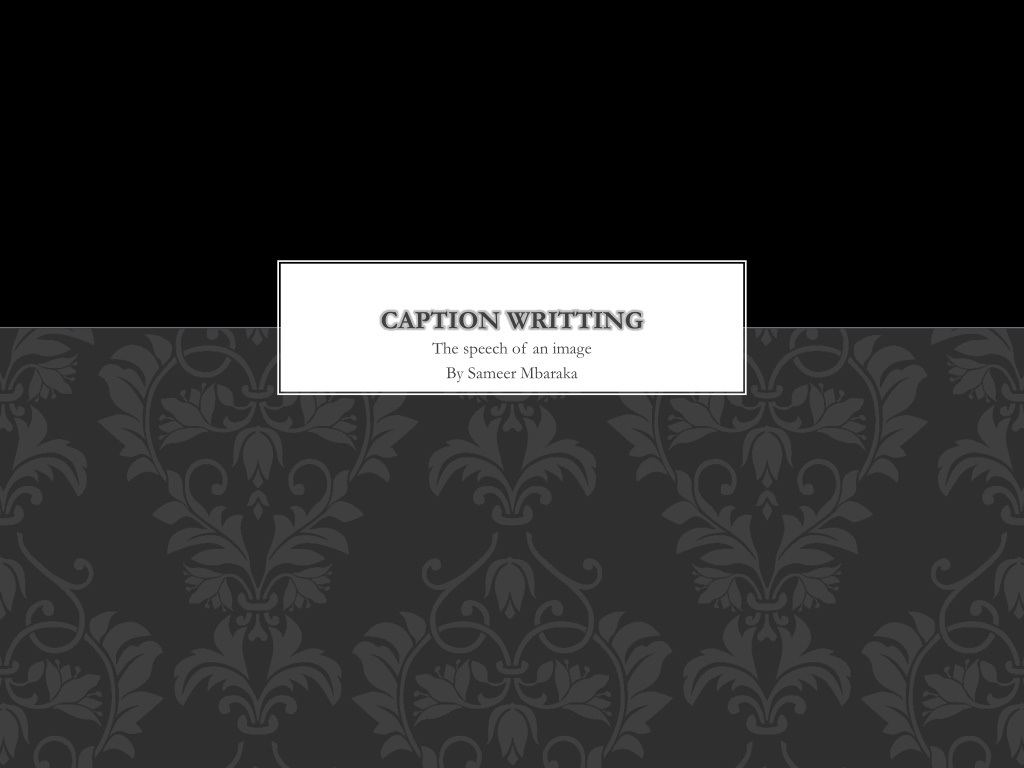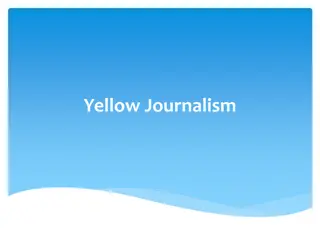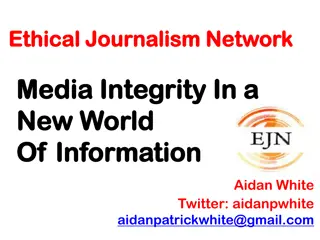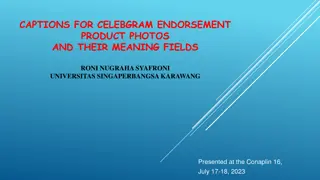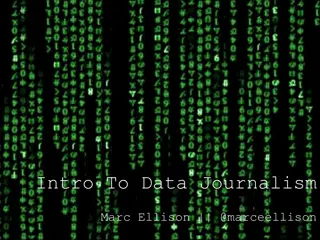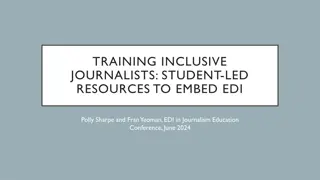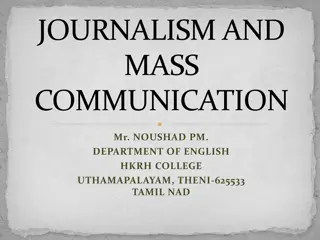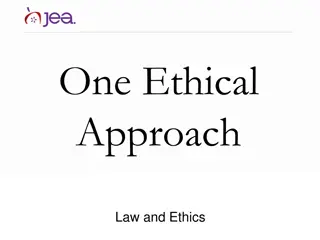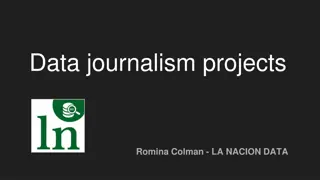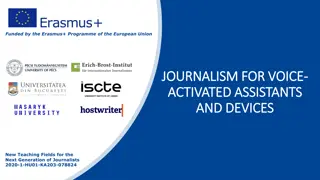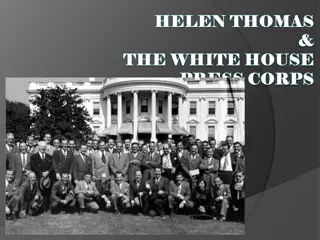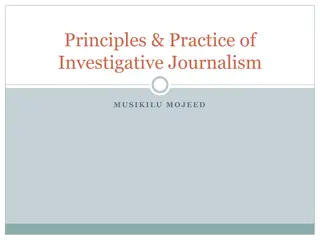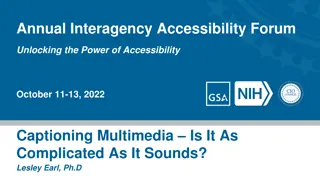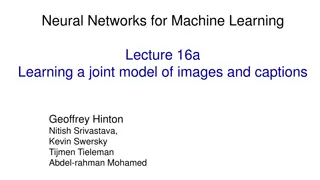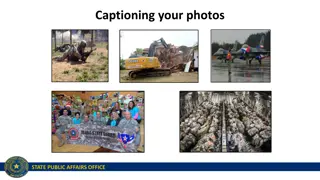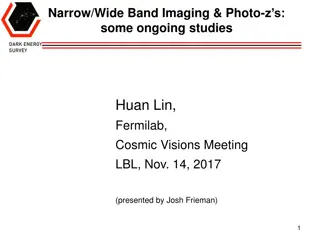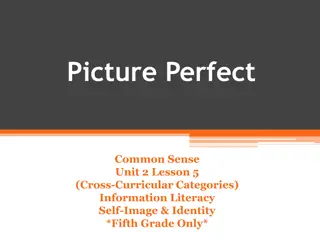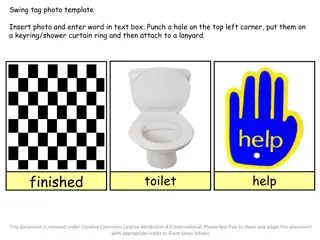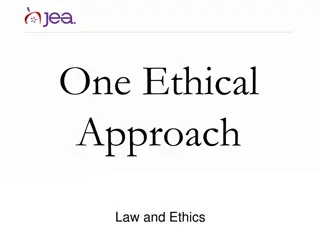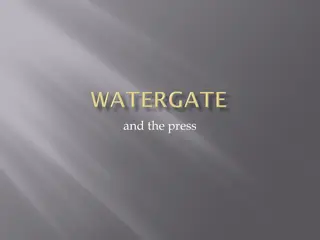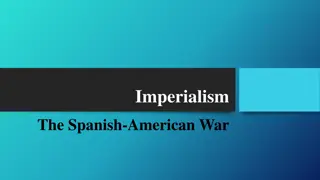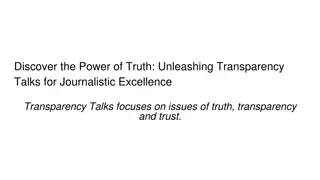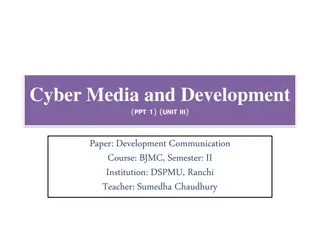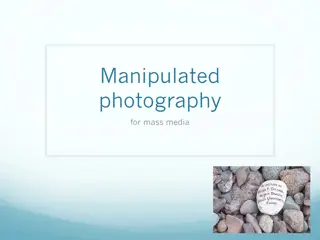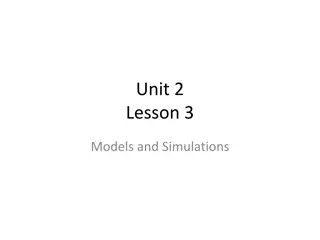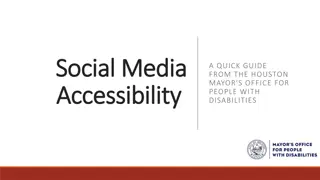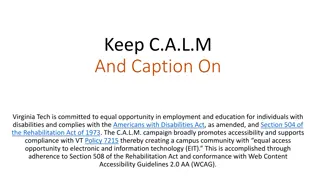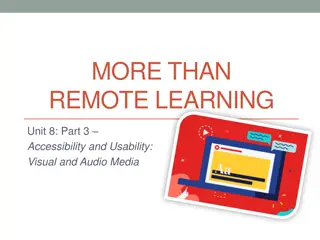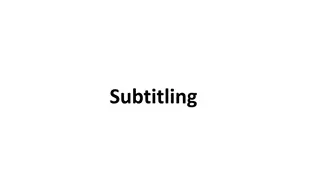Understanding the Importance of Photo Captions in Journalism
Photo captions play a crucial role in conveying information that the image alone might not express. Accuracy and descriptive details are key in creating effective captions for photos, enhancing the reader's understanding and engagement with the visual content. This article explores the definition, principles, and significance of captions in journalism, emphasizing the need for factual accuracy and providing insightful details that supplement the image content.
Download Presentation

Please find below an Image/Link to download the presentation.
The content on the website is provided AS IS for your information and personal use only. It may not be sold, licensed, or shared on other websites without obtaining consent from the author. Download presentation by click this link. If you encounter any issues during the download, it is possible that the publisher has removed the file from their server.
E N D
Presentation Transcript
CAPTION WRITTING The speech of an image By Sameer Mbaraka
DEFINITION OF THE CAPTION Caption is the sentence written to add more information to the picture than what it can convey by it self.
DEFINITION OF THE CAPTION Caption is the sentence written to add more information to the picture than what it can convey by it self. Captioning photos is an important part of journalism. Captions must be accurate and informative. In fact, most readers tend to look at the photos, and then the captions, in a story before they decide whether they want to read the story itself.
DEFINITION OF THE CAPTION Caption is the sentence written to add more information to the picture than what it can convey by it self. Captioning photos is an important part of journalism. Captions must be accurate and informative. In fact, most readers tend to look at the photos, and then the captions, in a story before they decide whether they want to read the story itself. A photo caption should provide the reader basic information needed to understand a photograph and its relevance to the news.
PRINCIPLE OF THE CAPTION Check your facts. One of the most important aspects of any type of journalism is accuracy. If you use incorrect information, the story or photo loses credibility. Before uploading or printing any photo captions, make sure you ve checked that anything stated in the caption is accurate.
PRINCIPLE OF THE CAPTION Check your facts. One of the most important aspects of any type of journalism is accuracy. If you use incorrect information, the story or photo loses credibility. Before uploading or printing any photo captions, make sure you ve checked that anything stated in the caption is accurate. Describe something that isn t obvious. If a photo caption simply describes the visuals in the photo, it s fairly useless. If you have a photo of a sunset and simply caption is as a sunset you re not adding any additional information for the reader. Instead, describe details of the photo that are not obvious, like the location, the time of day or year, or a specific event that is taking place.
PRINCIPLE OF THE CAPTION Check your facts. One of the most important aspects of any type of journalism is accuracy. If you use incorrect information, the story or photo loses credibility. Before uploading or printing any photo captions, make sure you ve checked that anything stated in the caption is accurate. Describe something that isn t obvious. If a photo caption simply describes the visuals in the photo, it s fairly useless. If you have a photo of a sunset and simply caption is as a sunset you re not adding any additional information for the reader. Instead, describe details of the photo that are not obvious, like the location, the time of day or year, or a specific event that is taking place. For example, if you have a photo of a sunset you might want to caption it as: Pacific coast sunset, March2016, from Long Beach, Vancouver Island." Also avoid using terms like: is shown, is pictured, and looks on, or above."
PRINCIPLE OF THE CAPTION Do not start a caption with certain words. A caption should not begin with the words a, an, or the. These words are too basic and take up valuable captioning room when they aren t necessary. For example, instead of saying: A blue jay in the boreal forest; simply say: Blue jay flying through boreal forest. Also, do not start a caption with the name of someone, start the caption with a description first and then include the name. For example, don t say: Stan Theman near Sunshine Meadow Park. Instead say: Jogger Stan Theman near Sunshine Meadow Park." When identifying where someone is in a photo, you can say from left. You do not have to say from left to right."
PRINCIPLE OF THE CAPTION Identify the main people in the photo. If your photo includes important people, identify who they are. If you know their names, include them (unless they ve asked to remain anonymous). If you don t know their names, you might want to put a description of who they are instead (e.g. protesters on the streets of Washington, DC ).While it shouldn t need to be said, make sure any and all names you use are spelled correctly and have the proper title. If the photo includes a group of people, or some people who are not relevant to the story (i.e. their names are not required to tell the story), you do not have to name each of them in the caption.[1]
PRINCIPLE OF THE CAPTION Identify the main people in the photo. If your photo includes important people, identify who they are. If you know their names, include them (unless they ve asked to remain anonymous). If you don t know their names, you might want to put a description of who they are instead (e.g. protesters on the streets of Washington, DC ).While it shouldn t need to be said, make sure any and all names you use are spelled correctly and have the proper title. If the photo includes a group of people, or some people who are not relevant to the story (i.e. their names are not required to tell the story), you do not have to name each of them in the caption.[1]
PRINCIPLE OF THE CAPTION Be as specific as possible. This advice goes hand-and-hand with being accurate. If you are unsure of where the photo was taken, or who is in the photo, find out. Showing a photo without any specific information may not be useful to the reader, especially if you cannot inform them of the context in which the photo was taken
PRINCIPLE OF THE CAPTION Be as specific as possible. This advice goes hand-and-hand with being accurate. If you are unsure of where the photo was taken, or who is in the photo, find out. Showing a photo without any specific information may not be useful to the reader, especially if you cannot inform them of the context in which the photo was taken If you were working with another journalist for the story, contact them for more information if needed. If you are trying to identify a specific person in the photo, describing where in the photo they are is very useful. For example, if Bob Smith is the only one in a hat, you can say: Bob Smith, back row in hat."
PRINCIPLE OF THE CAPTION Use the present tense in captions. Because most photos being shown as part of a news story are of things happening right now, use the present tense in the caption. An obvious exception would be any historical photos, where using the past tense makes sense. The nice thing about using the present tense is that it portrays a sense of immediacy and increases the impact of the photo on the reader. Remember to always include credits and citations. Every photo should include the name of the photographer and/or the organization that owns the photograph. In actual photographic magazines and publications, photos also include the technical details of how the photo was taken (e.g. aperture, film speed, f-stop, lens, etc.)[3]
PARTS OF CAPTION Headline Primary information Secondary information Dateline/credit line
PARTS OF CAPTION Headline ?
PARTS OF CAPTION Primary information ?
PARTS OF CAPTION Secondary information ?
PARTS OF CAPTION Date line ?
